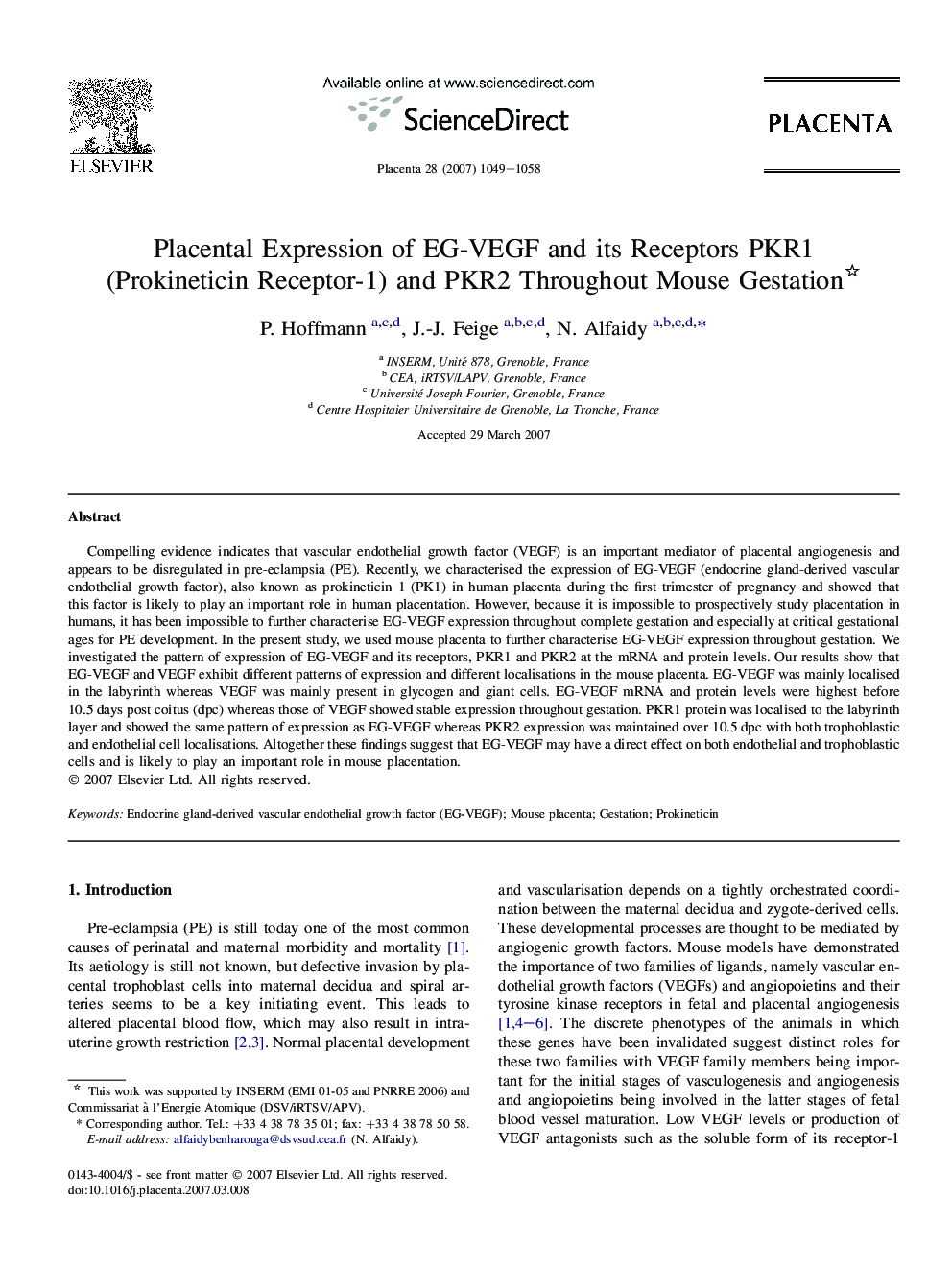| Article ID | Journal | Published Year | Pages | File Type |
|---|---|---|---|---|
| 2789710 | Placenta | 2007 | 10 Pages |
Compelling evidence indicates that vascular endothelial growth factor (VEGF) is an important mediator of placental angiogenesis and appears to be disregulated in pre-eclampsia (PE). Recently, we characterised the expression of EG-VEGF (endocrine gland-derived vascular endothelial growth factor), also known as prokineticin 1 (PK1) in human placenta during the first trimester of pregnancy and showed that this factor is likely to play an important role in human placentation. However, because it is impossible to prospectively study placentation in humans, it has been impossible to further characterise EG-VEGF expression throughout complete gestation and especially at critical gestational ages for PE development. In the present study, we used mouse placenta to further characterise EG-VEGF expression throughout gestation. We investigated the pattern of expression of EG-VEGF and its receptors, PKR1 and PKR2 at the mRNA and protein levels. Our results show that EG-VEGF and VEGF exhibit different patterns of expression and different localisations in the mouse placenta. EG-VEGF was mainly localised in the labyrinth whereas VEGF was mainly present in glycogen and giant cells. EG-VEGF mRNA and protein levels were highest before 10.5 days post coitus (dpc) whereas those of VEGF showed stable expression throughout gestation. PKR1 protein was localised to the labyrinth layer and showed the same pattern of expression as EG-VEGF whereas PKR2 expression was maintained over 10.5 dpc with both trophoblastic and endothelial cell localisations. Altogether these findings suggest that EG-VEGF may have a direct effect on both endothelial and trophoblastic cells and is likely to play an important role in mouse placentation.
